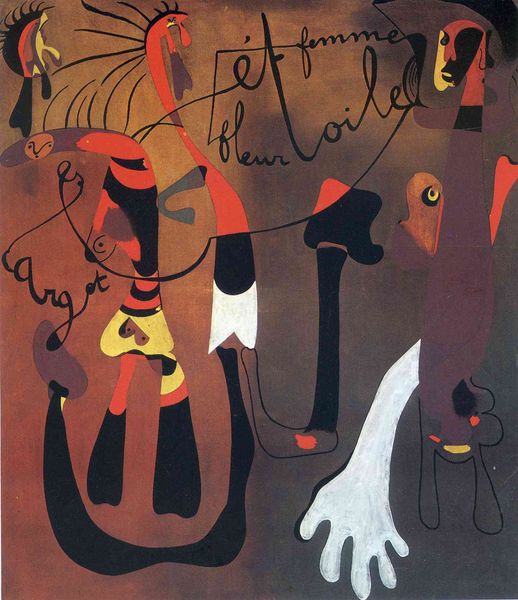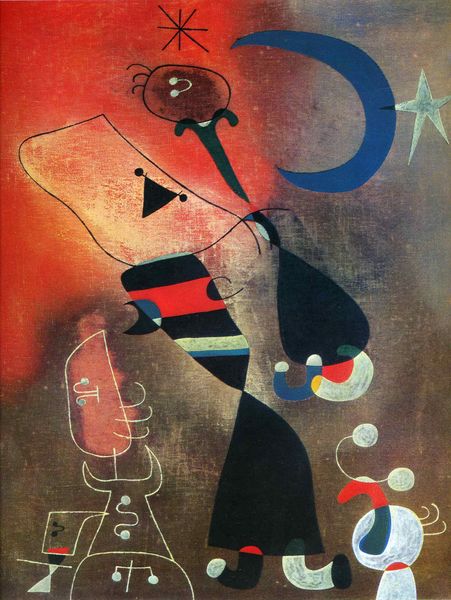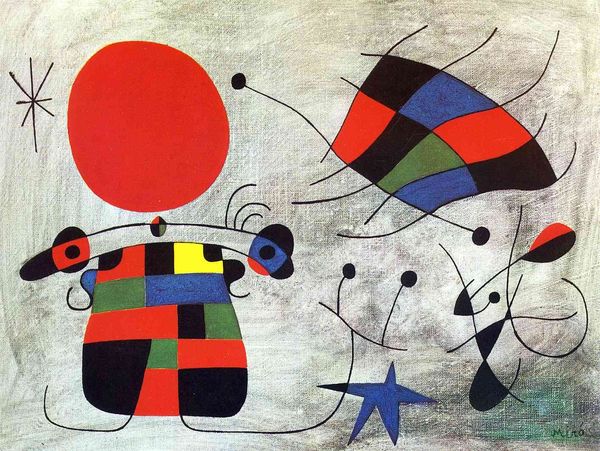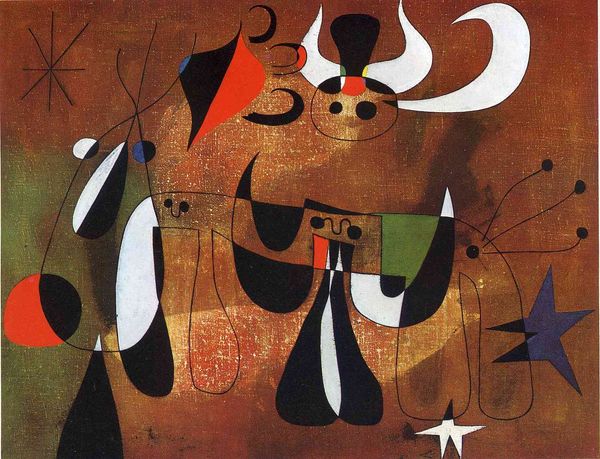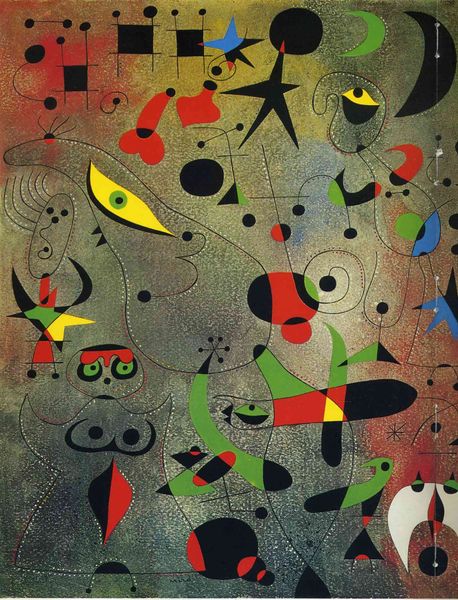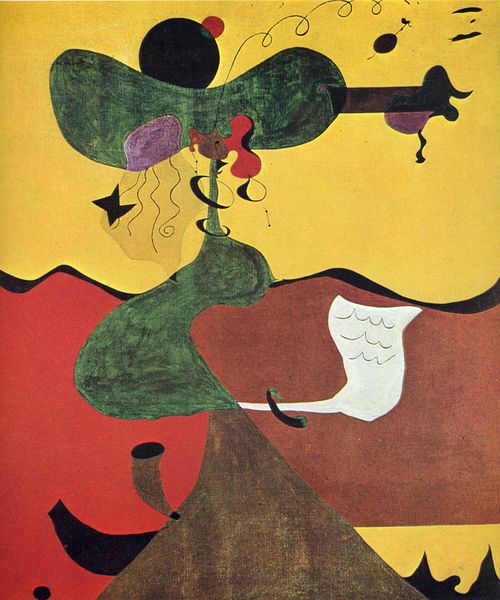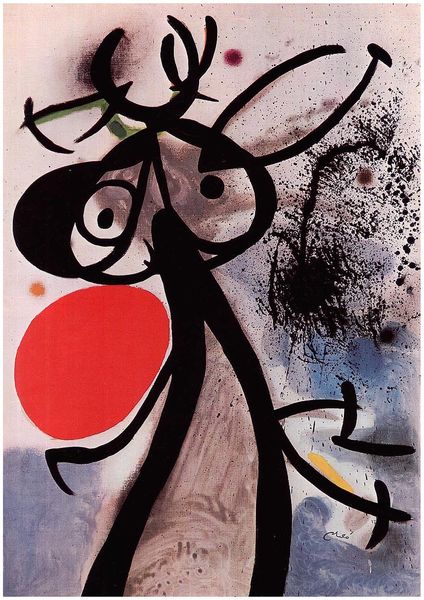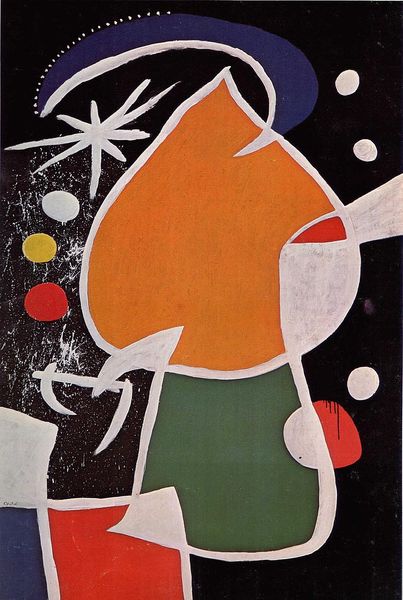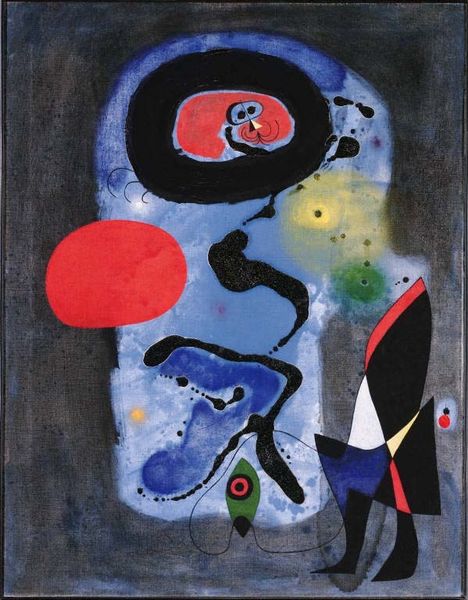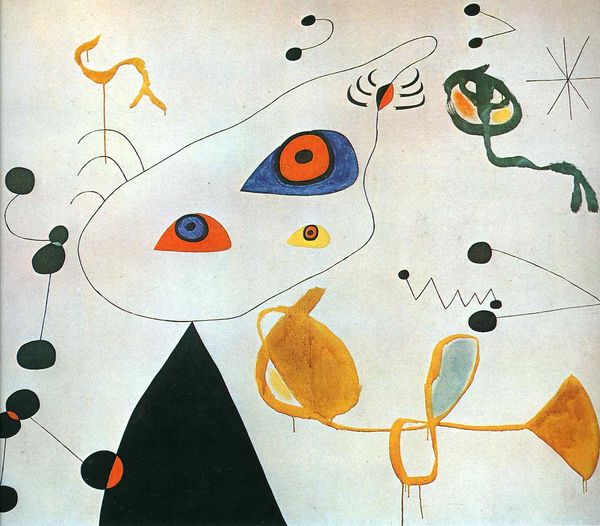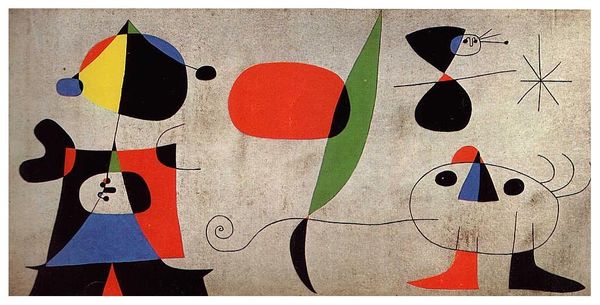
painting, oil-paint
#
painting
#
oil-paint
#
geometric
#
naive art
#
biomorphic
#
abstraction
#
surrealism
#
modernism
Copyright: Joan Miro,Fair Use
Curator: Here we have Joan Miró's "Rhythmic Characters," a painting completed in 1934 using oil on canvas. It's a fascinating piece, emblematic of the Surrealist movement he helped define. Editor: It feels instantly playful and a little unsettling. The floating, abstract forms suggest figures, but they're so far removed from reality. The palette is surprisingly earthy for a surrealist work, don’t you think? Curator: I do, and I believe that grounding stems from Miró's Catalan roots. He often synthesized international avant-garde movements with his personal connection to the landscape and cultural identity of Catalonia. "Rhythmic Characters," as you observe, features those biomorphic forms which he often employed, a type of organic abstraction he explored alongside artists such as Jean Arp. Editor: There’s something very… intentional about their awkwardness, wouldn’t you agree? I mean the characters feel less like a celebration of the subconscious and more like a deliberate disruption of societal norms around representation, gender, maybe even the rising fascism in Europe. Was that on his radar? Curator: Definitely. Miró situated himself amongst intellectuals who used artistic expression to subtly criticize power structures. I am not certain his imagery is explicitly against a regime. But I'm sure it served as an act of reclaiming imagination in an environment increasingly governed by ideology and propaganda. He advocated art to be rebellious! Editor: I am intrigued by that balance you mention between aesthetic innovation and socio-political messaging. So, rather than seeing the painting as mere decoration or fantastical escape, we consider it almost a form of quiet resistance—the assertion of individual freedom. Curator: Exactly. And understanding the public debates surrounding Surrealism and its role in defining public art also unlocks a richer appreciation for its complexities. Editor: That's a fascinating perspective. Next time I view it, I will recall how Miró advocated free rebellion. Thank you for pointing this out. Curator: Indeed! I feel refreshed whenever these sorts of discussion emerge. Thank you for your insights, too!
Comments
No comments
Be the first to comment and join the conversation on the ultimate creative platform.

